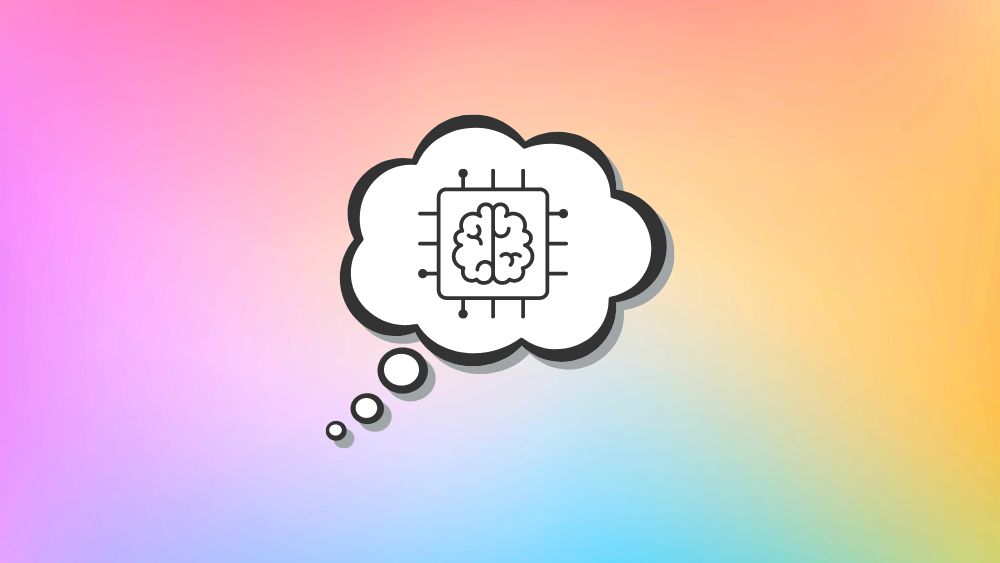Insights
INSIGHTS
All Topics
My Account
Tech Review: ChatGPT
26 Mar 2024by Ioan Marc Jones
Drawing on our experience using tech as a charity, our Tech Review series features honest reviews by the Charity Digital team about the tech they have used in their day-to-day lives. What does our Head of Content think about the generative artificial intelligence platform ChatGPT?
Generative artificial intelligence (AI) has become the most talked about tech of the past decade. And the most talked about generative AI platform is ChatGPT. People across the world are turning to ChatGPT to conduct research, summarise complex information, improve coding, generate ideas, analyse data, boost customer service, and so much more.
At Charity Digital, our main use of ChatGPT is content creation and brainstorming. In this review, our Head of Content Ioan Marc Jones discusses how charities are best able to use the tech, the implicit limitations of the tech, and the untapped possibilities.
In one word
Groundbreaking.
Uses
The uses of generative AI platform ChatGPT are endless. In the simplest terms, the tech works by producing outputs to prompts in a matter of seconds. The outputs, on ChatGPT 3.5 at least, are typically text-based and often answer questions or provide information on any given topic.
The tech is most often used for ideation, brainstorming, and generating copy. At Charity Digital, we use the tech to support content creation, particularly in terms of changes to titles and subtitles, summarising complex information, and elements of keyword research and optimisation. But the tech is limited in terms of writing complete articles, as the copy is often generic and dull, the ideas are often unoriginal and predictable, and the structure and form often lack flair and ingenuity.
I find generative AI content tedious and boring. And I can always tell when people rely too heavily on the tech, failing to apply the necessary human oversight. It seems strange that so many people publish content, on both websites and socials, that is generated by AI. They are depending on other people’s ideas, scraped from the internet. It is always revealing – and best avoided.
ChatGPT has better uses outside of generating content. The tech allows you to perform effective data analytics, for example. You can input your data and the platform will explore that data, highlighting patterns, trends, and insights. The tech can formulate natural language queries to retrieve information from data sets and provide narrative summaries based on results. Summaries are accessible and visually appealing, making them easy to read for non-technical audiences.
Charities can use ChatGPT for programming assistance, helping them to code websites or just providing debugging suggestions. They can also integrate the tech easily into chatbots, providing automated responses to customer queries or assisting with the navigation of websites.
That is just a handful of use cases, many of which are common. But the range of actual applications are endless, ranging from translation to converting text to audio, and so much more. Perhaps the best way to use ChatGPT is through experimentation: use the tech to find a solution to any problem.
Features
You could argue that ChatGPT has millions of features. Or you could argue that it only has one: the ability to generate outputs based on inputs. You ask the tech to do something, and it responds.
It can, as mentioned above, write code, translate languages, or indeed translate text-to-audio. It can also produce a recipe based on your partner’s favourite ingredients, write a long lullaby about the shortcomings of shortbreads, or even compose a haiku Tech Review of ChatGPT:
“Language flows like streams,
ChatGPT’s vast wisdom gleams,
Bytes whispering dreams.”
That is a direct copy. And it’s not great – the middle line is meant to have seven syllables, according to the rules of the haiku, but I counted eight. So I wrote: ‘There are eight syllables in that second line’. The response:
“Apologies for that oversight. Here’s a revised haiku with the correct syllable count:
Language flows, a stream,
ChatGPT’s vast wisdom gleams,
Bytes whispering dreams.”
The core feature, text generation, must be approached with caution, as shown above. And users need to apply human oversight to every usage of ChatGPT. Avoid the copy and paste at all costs. And always employ a healthy dose of scepticism when reading through outputs.
The learning curve
ChatGPT is easy to use in simple ways. It is easy to apply prompts and receive a response. But it is more challenging to use in an efficient way. Take prompts themselves, for example. You can improve outputs by ensuring every prompt has clarity, all formatting has been defined, all context and background information has been provided.
Outputs can become more engaging by adding playful prompts: write a rebuttal nursery rhyme by the person who pushed Humpty Dumpty off the wall, for example, or write a brief history of timelessness by Stephen Hawking’s evil twin. As with the haiku above, the virtue usually exists in novelty: it is impressive. But the practical application of playful prompts is perhaps minimal.
Using ChatGPT well requires a little training and a lot of thought about application. The best uses, as stressed above, are perhaps less impressive, less funny, but more effective. Data analytics and segmentation can prove really useful, but you’ll need to work out the best way to use the tech to achieve that task. Focus primarily on automating simple tasks, rather than completing entire creative tasks, and you’ll be using the tech effectively.
Value for money
ChatGPT 3.5 is completely free – and works well for most tasks. But Chat GPT 4, the latest instalment, usually costs only $20 per month – which is a bargain. ChatGPT 4 has greater functionality, with the integration of image generation as well as a host of other options.
It’s worth noting that, at present, upgrades to ChatGPT 4 have been paused due to demand. Users hoping to upgrade must sign up for the service. It’s also worth noting that, according to OpenAI CEO Sam Altman’s recent discussion with the Financial Times, ChatGPT 5 will arrive in the near future.
It is said to be far more advanced than ChatGPT 4. But time will tell.
Pros and cons of ChatGPT
Pro: Speed
ChatGPT is fast, efficient, and produces results in a matter of seconds. It can save huge amounts of time when generating copy, data analysis, ideas, or anything else. The key to maximising speed is ensuring you have the best possible prompts – remaining concise, clear, and specific.
Pro: Application
The applications of the tech are growing. Every day someone finds some cool and interesting way to use the tech to solve a problem. ChatGPT might provide a part solution or an entire solution to a problem facing your charity – but it depends on you to actually apply the tech.
Con: Accuracy
The tech can produce misleading, inaccurate, out-of-date, and completely made-up information. That means you must constantly monitor outputs and ensure they are accurate. That will require human oversight, which undermines the time-saving benefit mentioned above.
Con: Ethics
The tech can introduce bias and create risk around plagiarism. As the tech is built on often opaque inputs, the outputs can reflect bias and (through machine learning) further the introduced bias. Again, human oversight is necessary – and a healthy dose of scepticism is always best practice.
Con: Quality
As mentioned above, the prose is often dull and generic, the ideas are by nature unoriginal, and the absence of accuracy can cause serious reputational and indeed legal damage. As with the above, the key is to always employ human oversight to eliminate some of the essential risks.
Final score
8/10. In the generative AI space, ChatGPT seems far ahead of other competitors. It’s a revolutionary tool – but users should be aware of its limitations and attempt to use it in the right way.
Ioan is Head of Content for Charity Digital, specialising in fundraising, service delivery, and digital impacts on climate change. Ioan has written for various publications, including the Independent, openDemocracy, Total Politics, HuffPost, Economy, New England Review, Litro, and many more.
More on this topic
Related Content
Recommended Products
Our Events
Charity Digital Academy
Our courses aim, in just three hours, to enhance soft skills and hard skills, boost your knowledge of finance and artificial intelligence, and supercharge your digital capabilities. Check out some of the incredible options by clicking here.


















